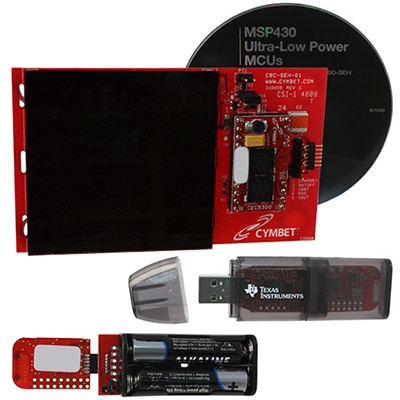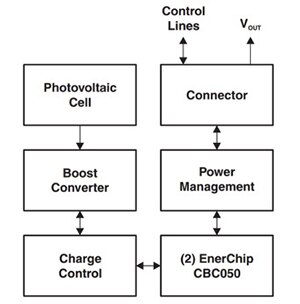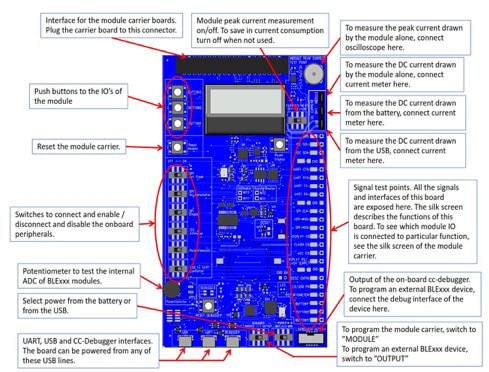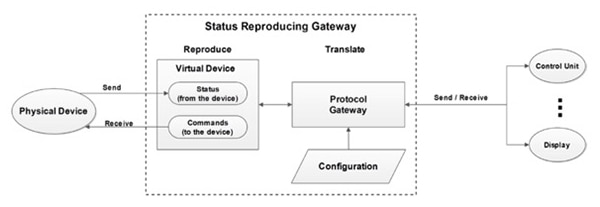How to Connect to the Internet of Things Using the Energy Around You
投稿人:DigiKey 欧洲编辑
2016-04-14
Energy is all around, but harvesting that power to link sensors and actuators together is a considerable challenge. This challenge has been made greater by the increasing need to connect these devices to the Internet of Things (IoT) to allow control from smartphones and analysis of data in the cloud.
There are many different ways to connect up the devices, and all have implications for the power budgets and the way energy can be harvested. The different sources can be light, vibrational energy, thermal energy from a temperature difference or even the radio energy from transmissions. These all have different characteristics for the way power is generated, and these have to be taken into account by the power management sub-system. This is especially important for wireless links that require high peak currents. These high current pulses place huge demands on batteries, and if this is done repeatedly for wireless broadcasts, the battery can be damaged. Pulses of tens of milliamperes are common in wireless sensor systems during transmit and receive modes, and the internal impedance of the battery cell often results in an internal voltage drop that stops the cell from delivering the pulse current at the right voltage.
One way to stop this is to use a low equivalent series resistance (ESR) capacitor across the battery so that the battery charges the capacitor between discharge pulses, and it is the capacitor that delivers the pulse current to the load. This can also be applied to the energy-harvesting source to charge the capacitor.

Figure 1: The eZ430-RF2500-SEH evaluation kit from Texas Instruments connects a solar panel to a low-power microcontroller and a 2.4 GHz wireless transceiver to connect a sensor node to the Internet of Things.
Solar energy is perhaps the main source of power from the environment. Solar cells can provide voltages up to 3 V and the current to power sensors and wireless links. However, the power delivered from the cells can vary significantly during the day, and, using artificial light, during the night as well. Maximum Power Point Tracking (MPPT) algorithms can track the conversion of the power from the cells to ensure that the process is always at its most efficient.
The eZ430-RF2500-SEH Solar Energy evaluation kit from Texas Instruments in Figure 1 uses a 2.25 inch x 2.25 inch solar cell array to power an MSP430 microcontroller and the CC2500 2.4 GHz wireless transceiver to connect a sensor to the Internet of Things. The high-efficiency solar array is optimized for operating indoors under low-intensity florescent lights, and this provides enough power to run a wireless sensor application with no additional batteries. The system stores additional energy in a pair of thin-film batteries with a 100 µAh capacity and a 1000 µF capacitor for high-current pulses during wireless transmissions. These provide enough power for 400+ transmissions and act as an energy buffer that stores the energy while the application is sleeping and has light available to harvest. The power management status and control signals from the board (Figure 2) are fed into the MSP430 controller where the firmware has been written to maximize the overall lifetime of the system.

Figure 2: The control and power management signals from the eZ430-RF2500-SEH board are handled by the MSP430 microcontroller.
The CC2500 transceiver is key to connecting the energy harvesting node to the network. This has a high sensitivity of -104 dBm with a low current consumption of 13.3 mA in receive mode at a data rate of 2400 bit/s. This means that the distance from the node to a gateway can be balanced with the power available from the solar cells by reducing the sensitivity, which would reduce the current requirement so that it matched the energy harvesting source. The eZ430 kit allows the developer to test out different modulation schemes such as OOK, 2-FSK, GFSK, and MSK to get the best connection for the lowest power.
Another approach is to use the latest version of Bluetooth Smart (version 4.0 and 4.1), which adds low power operation that now allows the technology to be used with energy harvesting sources to connect nodes to the Internet of Thing. The key element of the new approach is to quickly set up and tear down a link, sending data as quickly and efficiently as possible to minimize the energy used.
The Bluetooth Smart development kit from Silicon Labs currently uses the BLE112 Bluetooth module that is based around the same CC2500 device as the solar energy harvesting board, but with the Bluetooth Smart stack, scripts and application programming interface running on the internal 8051 microcontroller. This provides an easy way for developers to implement the Bluetooth capability to connect to a nearby smartphone or other Bluetooth-enabled terminal. Like the example above, this also requires a buffered and controlled power management sub-system to deliver the high peak currents when the Bluetooth link is set up.

Figure 3: The interfaces on the Bluetooth Smart development board allow an energy harvesting source and manager to power a wireless link to a smartphone as part of the Internet of Things.
This can deliver data rates of up to 1 Mbit/s and use the latest IPv6 protocol so that data packets can be forwarded easily to the Internet for further analysis.
The BLE112 Smart module can also host end-user applications, which means no external microcontroller is required to run the sensor node, keeping the power down and allowing it to be powered by an energy harvesting source with a small rechargeable battery. In the lowest power sleep mode it uses just 500 nA and will wake up within a few hundred microseconds to send the data.
Other developers have taken a different approach to reducing the power: producing their own low-power protocols for connecting equipment using energy harvesting. EnOcean’s low-power technology is based around a telegram that needs standby currents of just 100 nanoamps or less, an improvement of more than factor 10,000 on other wireless approaches.
This has come from recognition that it is difficult to achieve very-low power using IPv6 as a communication protocol, as it incurs significant overhead of 40 bytes of protocol data in the header. In addition, the simplest protocol that runs on IPv6, UDP (User Datagram Protocol), needs an extra 8 bytes, so transmitting just one byte of data needs 48 bytes of header information.
Instead, EnOcean’s protocol, based on the ISO/IEC 14543-3-1X specification and ultra-low power specifications of IEEE 802.15.4, uses only 7 bytes of header information for the telegram, dramatically reducing the amount of data that is sent, improving the energy efficiency of the link to just 50 µWs and opening up the use of a wide range of energy harvesting technologies. This can even include the kinetic energy generated from a light switch, which powers up the wireless link to send a byte of data.
The connection to the node is just one part of the Internet of Things however. To get the connection to the Internet, EnOcean systems use a dedicated IP gateway to provide the translation between the energy-efficient sensor protocol and IPv6 for intelligent data processing (Figure 4). The gateway monitors the state of each connected sensor node and acts as their representative within the IPv6 network, reproducing each physical device as a virtual one. The gateway also stores all the information and commands that can be sent to the device, often eliminating the need to contact the node at all.

Figure 4: EnOcean’s ultra-low-power protocol relies on a gateway to connect wireless sensors to the Internet of Things.
Each time a node such as a temperature sensor or switch sends new information, this is stored in the gateway for easy retrieval without having to query the node. Any commands to send to the node, for example changing a communication channel, are gathered together and sent all in one go, again minimizing the power drain.
Conclusion
Using a wireless connection to sensors for the Internet of Things brings significant challenges for using energy harvesting sources to eliminate the need to replace batteries in a design. The high peak currents, coupled with the wide range of different energy sources, from the kinetic energy of a switch to a solar array, present a large design space. Development kits such as the eZ430 SEH can help designers explore the space for solar power with a range of different protocols and power management algorithms, while the Bluetooth kit can explore the connection to a smartphone for delivering data. To support wider options for the energy source, the EnOcean protocols and gateway-based architecture can help designers connect even more wireless nodes to the Internet of Things.
免责声明:各个作者和/或论坛参与者在本网站发表的观点、看法和意见不代表 DigiKey 的观点、看法和意见,也不代表 DigiKey 官方政策。






 中国
中国